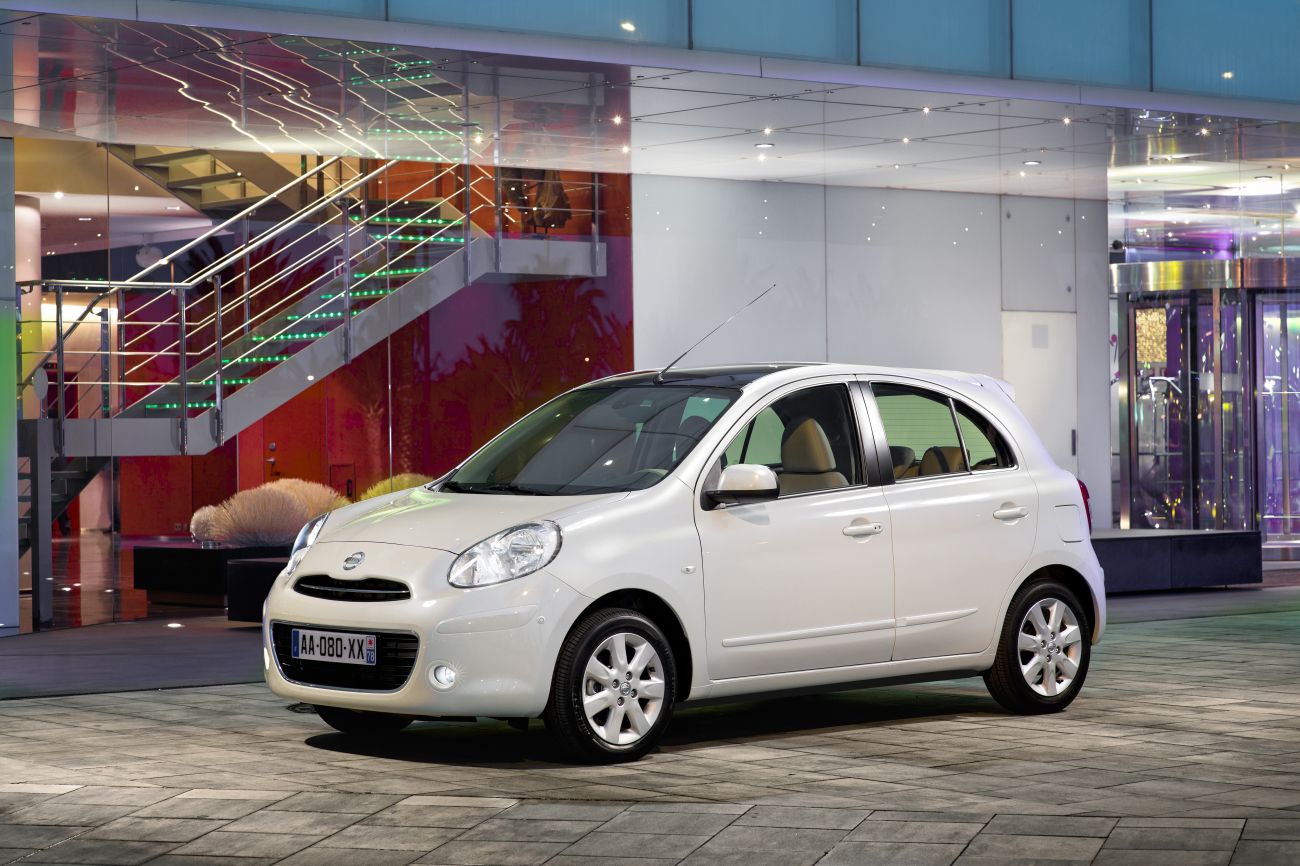Nissan Micra DIG-S
It's tough to produce a low-cost first car that can also be a chic runaround ... as this Micra proves

Your support helps us to tell the story
From reproductive rights to climate change to Big Tech, The Independent is on the ground when the story is developing. Whether it's investigating the financials of Elon Musk's pro-Trump PAC or producing our latest documentary, 'The A Word', which shines a light on the American women fighting for reproductive rights, we know how important it is to parse out the facts from the messaging.
At such a critical moment in US history, we need reporters on the ground. Your donation allows us to keep sending journalists to speak to both sides of the story.
The Independent is trusted by Americans across the entire political spectrum. And unlike many other quality news outlets, we choose not to lock Americans out of our reporting and analysis with paywalls. We believe quality journalism should be available to everyone, paid for by those who can afford it.
Your support makes all the difference.Nissan's latest Micra, the fourth generation, did not make it to these pages on its launch last year. Other cars somehow seemed more important at the time, and the new Micra seemed a cheap, nasty and rather apologetic little car compared with its two predecessors. So, it got overlooked.
Now, however, there's an interesting new derivative called DIG-S. It is nothing to do with making holes in the ground, nor exhortations to appreciate retro jazz. Instead, the lettering signifies that the engine is a direct-injection gasoline unit with a supercharger. Sounds racy already, but that is not the purpose. It represents an alternative approach to extracting ample power from a small engine while using minimal fuel. Most commonly a turbocharger is used for this, an air pump powered by the passage of exhaust gases and used to force air into the engine rather then relying on the engine to suck it in. A supercharger is also an air pump that forces air into the engine under pressure but is not driven by exhaust gases but rather by a mechanical connection to the engine itself.
This high-economy Micra produces 98bhp from its 1.2 litres and three cylinders, yet generates just 95g/km C02 on the official tests. It costs from £11,000, approximately (ranging from £9,650 to around £15,000).
It is built in five factories around the world. The Micras we buy in the UK come from India, which is fine but it's obvious that this latest Micra has been created to parameters far different from the previous ones. These now involve keeping the cost down and creating a design able to work as a low-cost first car for developing markets as well as a chic runaround for more affluent ones. It's a big task to reconcile these needs, and it hasn't worked.
The previous two Micras were the products of design studios clearly staffed by people having a good time. They were cute, rounded, neatly sculpted and friendly, with a touch of the cartoon about them. The interiors were simple and confident, with the just-departed Micra's cabin being a particularly fine piece of thoughtful, almost Dyson-like design.
This new one, by contrast, has no obvious Nissan identity outside, no sense of visual flow and tension, a grim interior, nondescript dashboard and clunky graphics. Where's the flair?
Because of this, the ruched leather, heated seats and cruise control of the posh Tekna version is faintly ridiculous, but the Visia is more honest and at ease with itself and has most of the features you could reasonably need.
So, mixed thoughts crowd your head as you set off in the DIG-S. The engine is a clever creation with very low internal friction and a very high compression ratio. At low speeds and under gentle acceleration, the supercharger is decoupled from its drive and the engine's airflow bypasses it, both to avoid wasting energy. Drive with more vigour, and the supercharger comes into play as the engine reverts to normal valve-closing.
This is the smoothest three-cylinder engine that I have yet experienced, and it pulls keenly with a deep, melodious note. The pace is brisk rather than racy, but it blends with a very sweet gear-change and it has surprisingly enjoyable handling. The electric power steering has a fluent, natural feel to it and the suspension copes well with bumps. There's also a confident, interactive flow around corners that is redolent of that paragon of dynamic rightness, the old Peugeot 205. I have to like the Micra DIG-S for that. But there's a snag in the execution, one it shares with the 500 TwinAir.
Driven vigorously the DIG-S isn't very economical, and certainly nowhere near as frugal as a small diesel. On my test run it averaged just under 40mpg, which is what the 500 TwinAir currently on my driveway also achieves in the real world. Once again, we have a car designed around the unrealistic official tests and illustrating their absurdity to perfection. Still, at least the road tax is free.
The rivals
Fiat 500 TwinAir: from £11,100.
Two cylinders. Its punchy engine makes it great fun but that's at the expense of economy. Looks good (85bhp, 95g/km).
Hyundai i20 1.4 CRDi Style: £13,745.
Built in India like the Micra. Has hidden depths. Gutsy, relaxed turbo-diesel, supple and fluent demeanour, low-key but tidy (89bhp, 111g/km).
Seat Ibiza 1.2 TDI Ecomotive 5dr: from £13,900.
Muscular three-cylinder power delivery means you don't have to work it hard. Real-world economy is brilliant. Good buy (75bhp, 92g/km).
Join our commenting forum
Join thought-provoking conversations, follow other Independent readers and see their replies
Comments